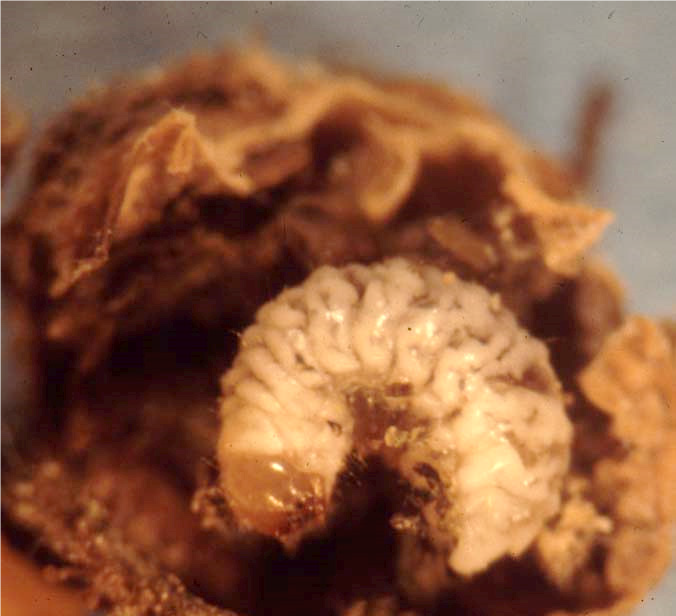The strawberry weevil (Anthonomus signatus) is also known as the “strawberry clipper”. It is native to North America, occurring from Texas to New England. When abundant, the weevils sever the pedicels of unopened flower buds on strawberry, blackberry, or raspberry, causing significant damage. In some areas, 50% - 75% of the crop can be destroyed by the strawberry weevil. Do not confuse the strawberry weevil with the strawberry root weevil, a different species.

Description
Adult strawberry weevils are brown to pitch-black with large dark spots on their wing covers. They are snout beetles less than 1⁄10” long. Strawberry weevil larvae are white legless grubs and are found inside clipped strawberry, raspberry, or blackberry flower buds.
Life Cycle
Adult strawberry weevils overwinter in mulch and leaf trash in and around strawberry, blackberry, or raspberry beds. They become active around blooming, when they begin to feed on buds and foliage.
Females deposit their eggs in holes they make with their snouts, about midway between the center and the tip of a bud. Then they cut off the bud stem about 1/4” below the bud. One female lay 20-30 eggs. The eggs hatch in 6-14 days, depending upon weather conditions. Larvae feed in the severed buds and attain full growth within 29 days. Once fully grown, the larvae pupate and emerge as adults (approximately mid-summer). The adults feed for a short time, find overwintering quarters, and emerge again the next spring.


Alan T. Eaton.
Management
IPM Strategies:
- Monitoring - Growers who wish to reduce pesticide use can monitor frequently for signs of infestation during the pre-bloom period, and eliminate a spray if few or no insects are present. Problems are worst along field edges, especially bordering woods. The New England Small Fruit Management Guide gives details on thresholds (the point where spraying is worthwhile). A few strawberry varieties can compensate for clipped buds by having the remaining fruits grow larger. Therefore, this pest is not as big a concern in those varieties
- Sanitation - Remove all weeds near strawberries as they provide a pollen source for the newly hatched strawberry weevils.
- Cultural Control - Destroy nearby unmanaged brambles, which are a source of the weevils.
- Chemical Control - There are a number of effective insecticides available for treating strawberry weevils.
Consult the New England Small Fruit Management Guide or your county Agricultural Field Specialist for specific recommendations.

dangling brown buds were attacked. Credit: Alan T. Eaton.
Stop! Read the label on every pesticide container each time before using the material. Pesticides must be applied only as directed on the label to be in compliance with the law. All pesticides listed in this publication are contingent upon continued registration. Contact the Division of Pesticide Control at (603) 271-3550 to check registration status. Dispose of empty containers safely, according to New Hampshire regulations.
Download the resource for the complete factsheet.

